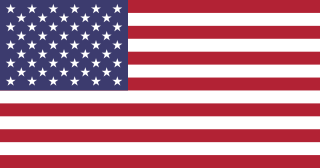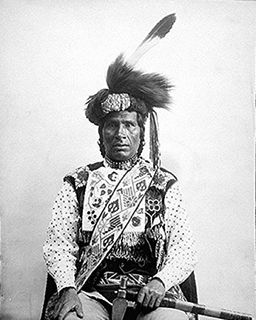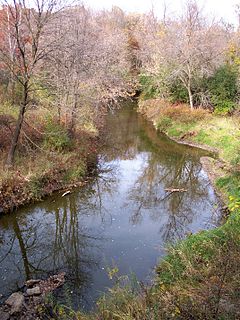| White Earth River (Minnesota) | |
|---|---|
| Country | United States |
| Physical characteristics | |
| Main source | Minnesota |
The White Earth River is a 26.2-mile-long (42.2 km) [1] tributary of the Wild Rice River of northwestern Minnesota in the United States. Via the Wild Rice River, the Red River of the North, Lake Winnipeg, and the Nelson River, it is part of the Hudson Bay watershed. It rises at the outlet of White Earth Lake and flows northwest through Mahnomen County, joining the Wild Rice River just east of the city of Mahnomen.

The Wild Rice River is a tributary of the Red River of the North in northwestern Minnesota in the United States. It is 183 miles (295 km) long. Via the Red River, Lake Winnipeg and the Nelson River, it is part of the watershed of Hudson Bay. It is one of two Red River tributaries with the same name, the other being the Wild Rice River of North Dakota.

Minnesota is a state in the Upper Midwest, Great Lakes, and northern regions of the United States. Minnesota was admitted as the 32nd U.S. state on May 11, 1858, created from the eastern half of the Minnesota Territory. The state has a large number of lakes, and is known by the slogan the "Land of 10,000 Lakes". Its official motto is L'Étoile du Nord.

The United States of America (USA), commonly known as the United States or America, is a country comprising 50 states, a federal district, five major self-governing territories, and various possessions. At 3.8 million square miles, the United States is the world's third or fourth largest country by total area and is slightly smaller than the entire continent of Europe's 3.9 million square miles. With a population of over 327 million people, the U.S. is the third most populous country. The capital is Washington, D.C., and the largest city by population is New York City. Forty-eight states and the capital's federal district are contiguous in North America between Canada and Mexico. The State of Alaska is in the northwest corner of North America, bordered by Canada to the east and across the Bering Strait from Russia to the west. The State of Hawaii is an archipelago in the mid-Pacific Ocean. The U.S. territories are scattered about the Pacific Ocean and the Caribbean Sea, stretching across nine official time zones. The extremely diverse geography, climate, and wildlife of the United States make it one of the world's 17 megadiverse countries.







